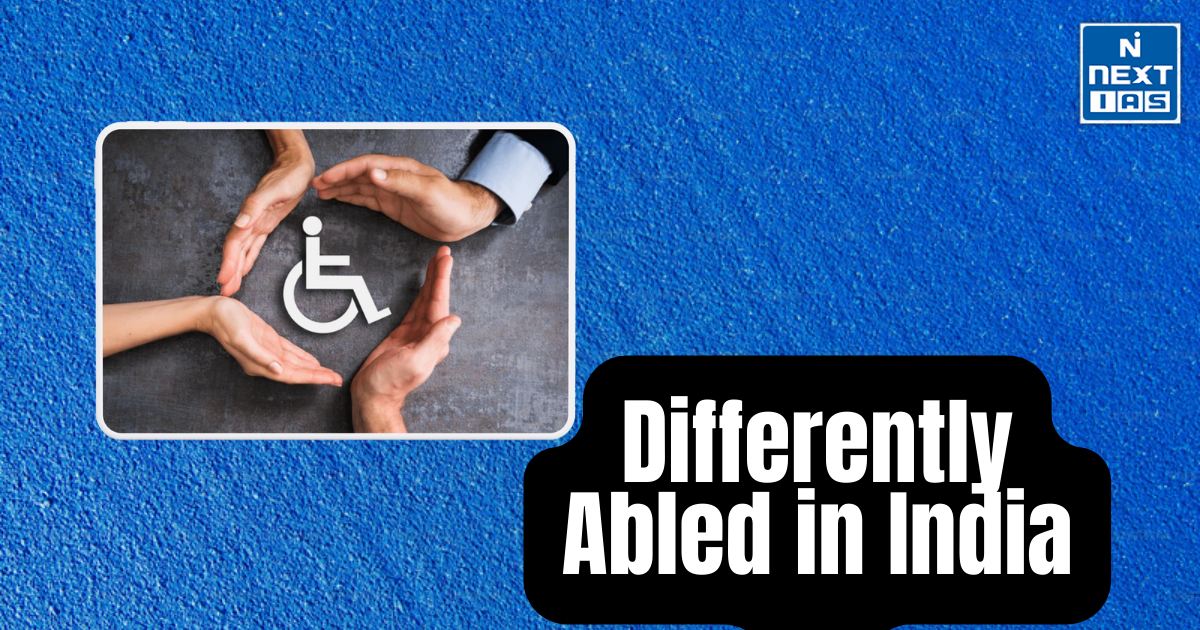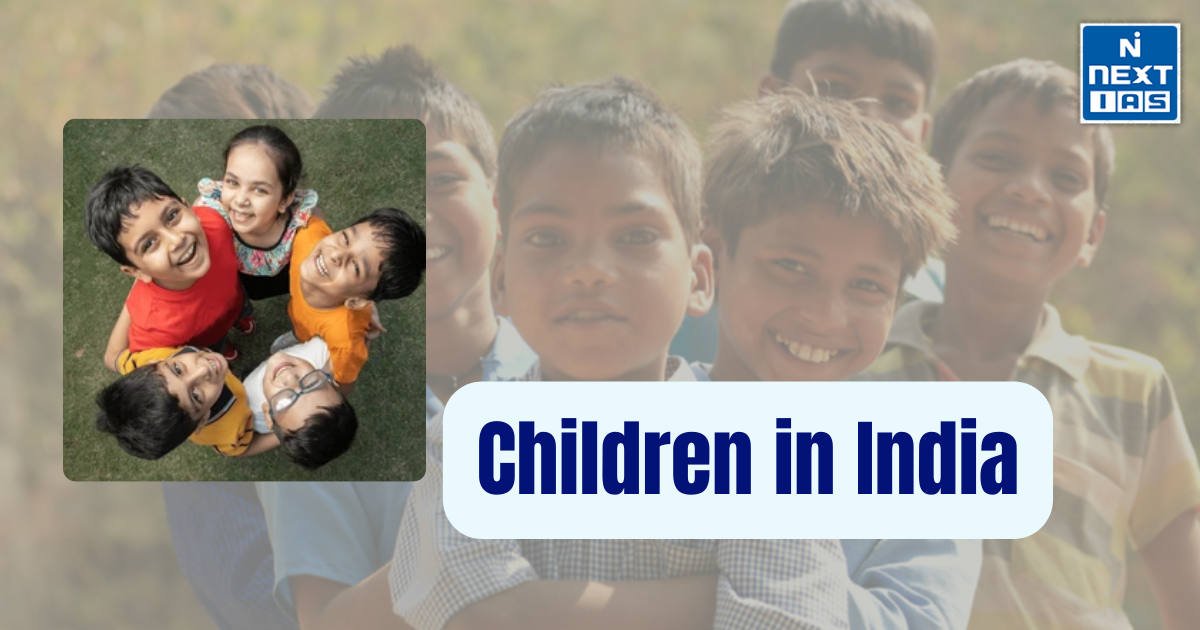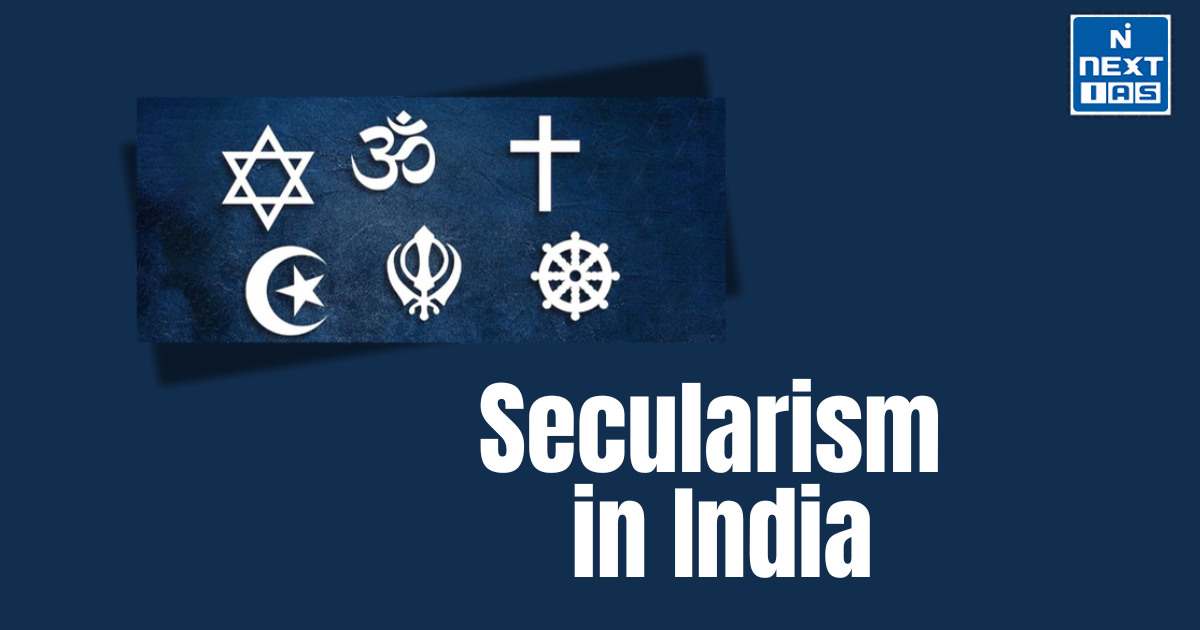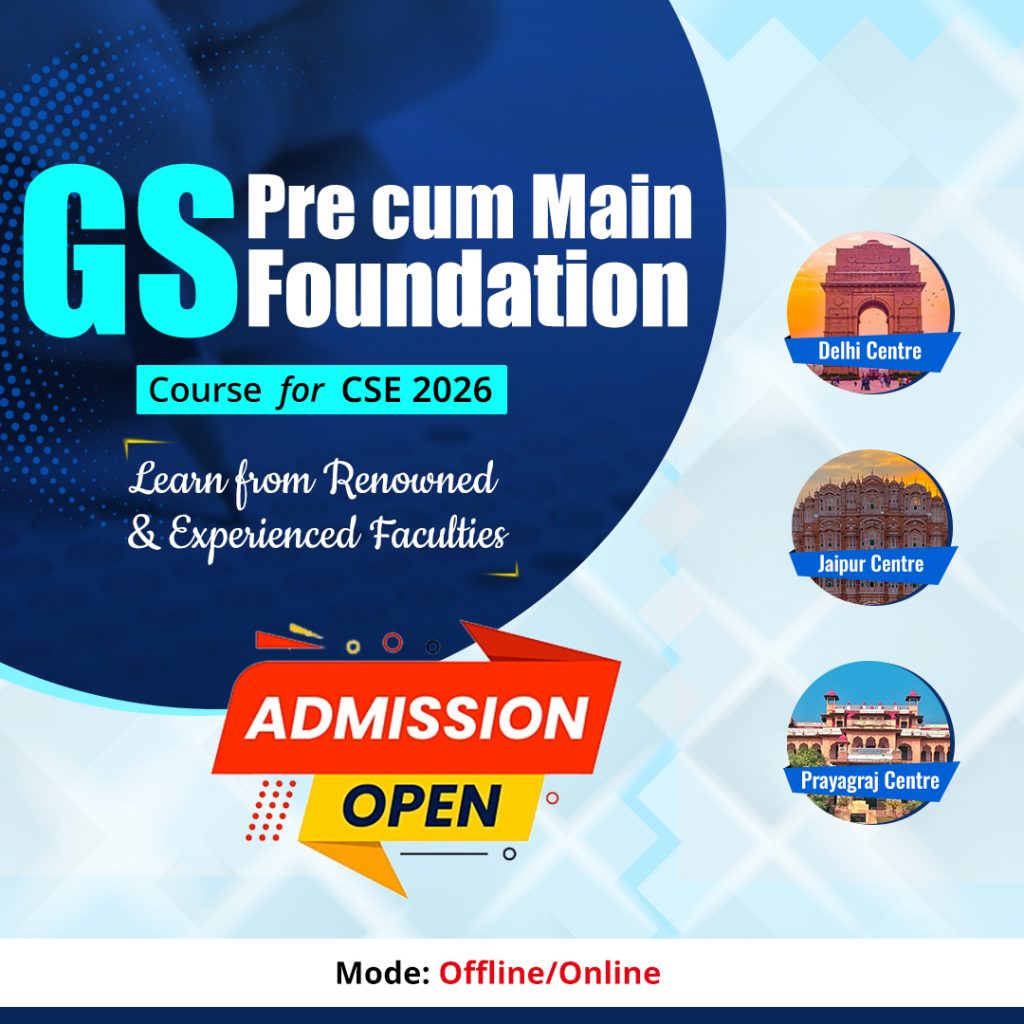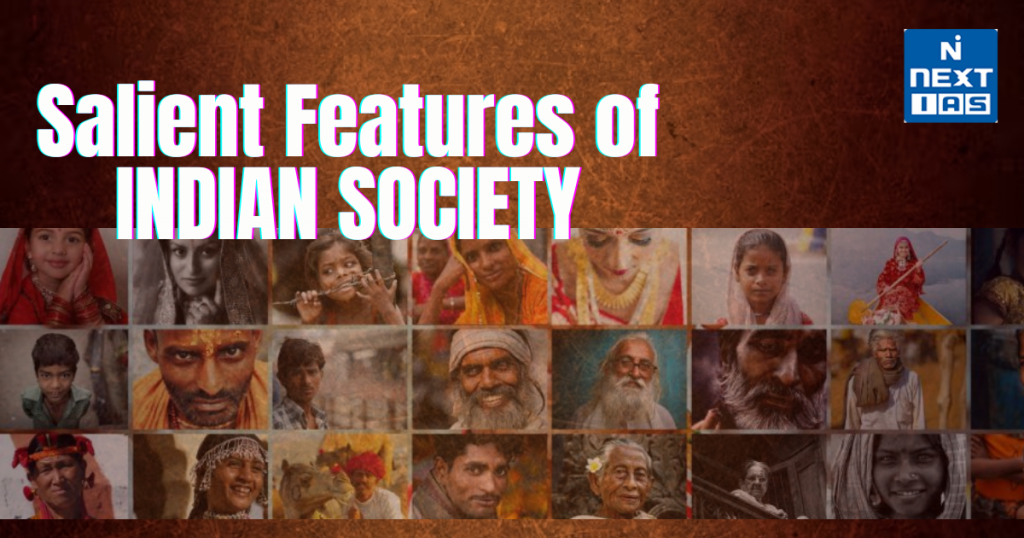
Indian society is a diverse and vibrant amalgamation of cultures, languages, religions, and traditions that reflect its rich historical and cultural heritage. Its unique ability to balance unity amidst diversity is a cornerstone of its strength, fostering social harmony and resilience. This article aims to study in detail the salient features of Indian society, exploring its diversity, traditions, evolving dynamics, and their significance in shaping the nation’s identity and progress.
About Indian Society
- Indian society is a rich tapestry of diversity, deeply rooted in its history, culture, and traditions.
- It is characterized by unity in diversity, with multiple languages, religions, ethnic groups, and cultural practices coexisting harmoniously.
- Family values, respect for elders, and a strong sense of community are integral to its social fabric.
- While modern influences and globalization have brought about significant changes, traditional norms and customs continue to play a vital role in shaping social interactions.
- The dynamic interplay between tradition and modernity defines Indian society, making it a unique blend of the old and the new.
Salient Features of Indian Society
- Unity in Diversity: India is home to 22 official languages recognized by the Constitution and hundreds of regional and tribal languages.
- This linguistic diversity is celebrated during cultural festivals and in the media, showcasing a tapestry of communication styles.
- India is a secular nation with a multitude of religions, including Hinduism, Islam, Christianity, Sikhism, Buddhism, and Jainism.
- Religious tolerance and coexistence form the foundation of Indiasociety, despite occasional communal tensions.n
- With over 2,000 ethnic groups, Indian society is a blend of Dravidian, Aryan, Mongoloid, and other racial elements.
- Traditional art, music, dance forms, and cuisine vary widely across states, reflecting this cultural diversity.
- Joint Family System: The joint family system has been a cornerstone of Indian society, emphasizing collective living and mutual support.
- While urbanization has led to the rise of nuclear families, joint families still thrive in rural and semi-urban areas.
- This system fosters intergenerational bonds, shared responsibilities, and a support system during crises.
- Caste System: The caste system, originating from the Varna system in ancient Hindu society, stratified people based on occupation.
- Over time, it became rigid and exclusionary, leading to socio-economic inequalities.
- Efforts like affirmative action (reservation) aim to uplift historically marginalized communities.
- Despite legal prohibitions, caste continues to influence social dynamics, especially in rural India.
- Religious Tolerance and Spirituality: Indian society is deeply spiritual, with traditions rooted in philosophy, yoga, and meditation.
- Interfaith interactions and syncretic practices, such as the celebration of festivals across religions, highlight tolerance and mutual respect.
- Spiritual leaders like Swami Vivekananda and Mahatma Gandhi have emphasized unity and moral values in society.
- Role of Women in Society: Historically, women played pivotal roles in family management and cultural preservation.
- Female figures like Rani Lakshmibai and Sarojini Naidu have also shaped India’s history.
- Contemporary Shifts: Increased education and employment opportunities have empowered women, although challenges like gender inequality and violence persist.
- Government schemes like Beti Bachao Beti Padhao and Ujjwala Yojana aim to improve women’s welfare.
- Village and Urban Dichotomy: India’s society is a blend of rural and urban lifestyles:
- Rural India: Characterized by agriculture-based economies, traditional customs, and close-knit communities.
- Urban India: Influenced by industrialization and globalization, with cosmopolitan lifestyles and rapid technological adoption.
- Festivals and Cultural Practices: Festivals like Diwali, Eid, Christmas, Guru Nanak Jayanti, and Pongal reflect the diverse religious and cultural traditions of India.
- Regional festivals like Bihu, Onam, and Durga Puja highlight local customs and practices.
- These celebrations foster social cohesion and are a vital part of the Indian identity.
- Respect for Elders: Indian society places significant emphasis on respecting elders, considering them repositories of wisdom and experience.
- Decision-making in families often involves consulting older members, reflecting traditional hierarchies and values.
- Influence of Modernization and Globalization: Modernization has brought changes in lifestyle, attitudes, and aspirations, particularly among the younger generation.
- Globalization has exposed Indian society to global culture, technology, and ideas, influencing consumer behavior and work culture.
- However, the challenge lies in balancing modern influences with traditional values.
- Social Stratification: Indian society is stratified based on caste, class, gender, and religion.
- While economic liberalization has reduced some disparities, significant gaps in wealth distribution and opportunities persist.
- Social mobility is improving with increased access to education and employment.
- Secularism and Democracy: India’s secular framework ensures equal treatment of all religions by the state.
- Democratic institutions provide a platform for diverse voices to participate in governance and decision-making.
- Importance of Agriculture: Agriculture remains the backbone of rural India, employing a significant portion of the population.
- Festivals, rituals, and traditions in rural areas often revolve around agricultural cycles and seasons.
- Social Reform Movements: Reform movements like those led by Raja Ram Mohan Roy, Jyotirao Phule, and Dr. B.R. Ambedkar have shaped Indian society by challenging social evils like sati, untouchability, and gender inequality.
- These movements paved the way for progressive legislation and social awareness.
- Linguistic and Regional Identity: Indian states were reorganized based on linguistic lines in 1956, leading to a strong sense of regional identity.
- While regional aspirations sometimes create tensions, they also celebrate India’s pluralistic heritage.
- Emphasis on Education and Knowledge: India has a long tradition of valuing education, with ancient institutions like Takshashila and Nalanda.
- The modern emphasis on education aims to bridge socio-economic divides and empower individuals.
- Initiatives like Sarva Shiksha Abhiyan and the Right to Education (RTE) Act focus on universal education.
- Youth and Aspirations: With over 65% of the population under 35 years of age, India is one of the youngest nations globally.
- The aspirations of the youth drive societal changes, innovation, and economic growth.
- Youth movements and activism often challenge regressive practices and advocate for inclusivity.
Conclusion
The salient features of Indian society—its diversity, spirituality, traditional values, and adaptability—make it one of the most dynamic societies in the world. Despite challenges like social stratification and cultural conflicts, Indian society continues to evolve, blending its rich heritage with modern aspirations. Understanding these features is crucial to appreciating the complexities and strengths of this multifaceted nation.
GS - 2


